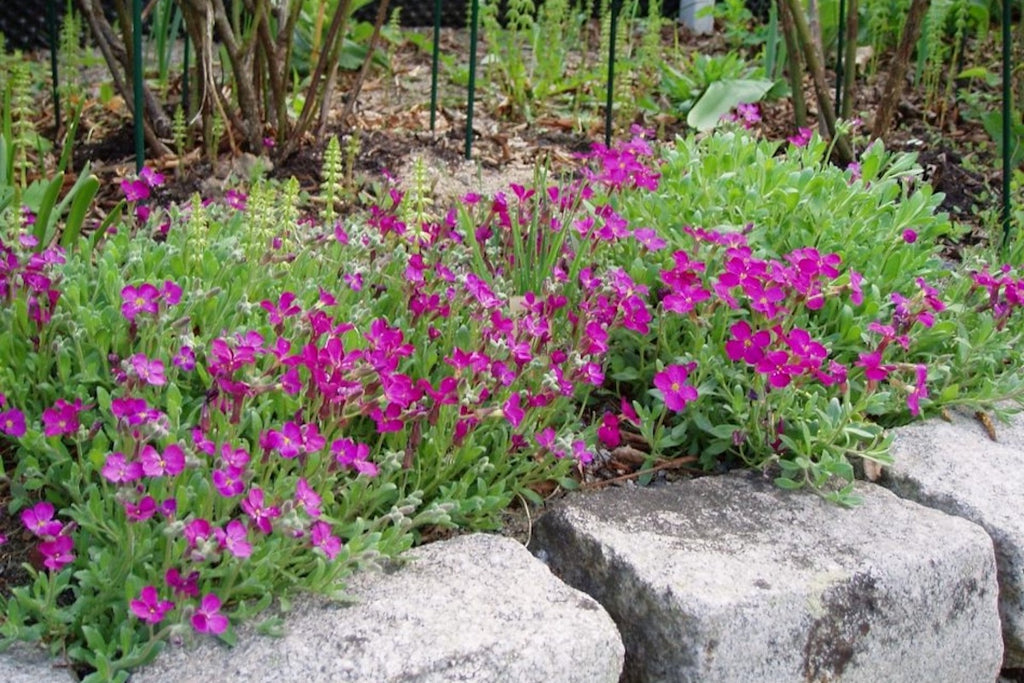
About this cultivar:
Aubrieta 'Red Cascade' (Cascade Series) is a strong-growing mat-forming perennial with single, deep magenta-red flowers in spring. Has the Royal Horticultural Society Award of Garden Merit (RHS AGM). A red rock rambler..
- Position: Full sun, Partial shade
- Soil: Almost any soil - grows well in Ballyrobert!
- Flowers: March, April, May
-
Other features: Royal Horticultural Society Award of Garden Merit (RHS AGM),
Great Ground Cover, Bees and Butterflies - Hardiness: H6 - Hardy in all of UK and northern Europe (-20 to -15°C), Fully hardy - grows well in Ballyrobert!
- Habit: Mat forming, Trailing
- Foliage: Evergreen
- Height: 0 - 15 cm (0 - 0.5 ft)
- Spread: 15 - 45 cm (0.5 - 1.5 ft)
- Time to full growth: 2 to 5 years
- Plant type: Herbaceous Perennial
- Colour: Pink, red, green
- Goes well with: Dianthus alpinus, smaller Geranium, smaller Helianthemum and perhaps smaller potentilla. Other different ideas include Vinca minor (my favourite for a blue and white combo) or crocus or Helleborus.
About this genus:
Aubrieta are often seen during spring as purple, blue, or pink flowers cascading down a wall or clinging to a sunny slope. It is a pity it is only seen as a full-sun rockery type plant because few flowers perform as well for so long in the garden and few are so good at attracting bees.
Science has recently reduced the number of species from around 20 down to 12. The four-petalled flowers give away their family allegiance; they are crucifers or members of the brassica family. Aubrieta take their name from Claude Aubriet (1688-1743), a French botanical artist. There are six native European species that are often found on limestone, open scree, crevices and coniferous woodland.
Most garden cultivars are thought to be some kind of Aubrieta deltoidea seedling, which is a species found in the Balkan Peninsula, the Aegean and south-west Europe. It varies naturally and includes lilac and red-flowered forms, with doubles also recorded in the wild. Many other garden cultivars are thought to be Aubrieta cultorum hybrids. Though, like many genus, named cultivars from multiple crosses are not attributed to a species at all.
You may read that Aubreita don't like rich soils and prefer full sun. We've found that as long as they are not in a pond or in full shade they will do fine in almost anywhere. They can get scraggly so make sure you cut them back hard before the go dormant if you don't want this to happen (in a crevice or a wall you probably want scraggly plants for a cascading effect).
Good for the front of a border, or a bank, or cascading over a wall. The standard advice is to pair Aubrieta with a plant that will flower after it has stopped. For this you could try Dianthus alpinus, smaller Geranium, smaller Helianthemum and perhaps smaller potentilla. Other different ideas include Vinca minor (my favourite for a blue and white combo) or crocus or Helleborus.

